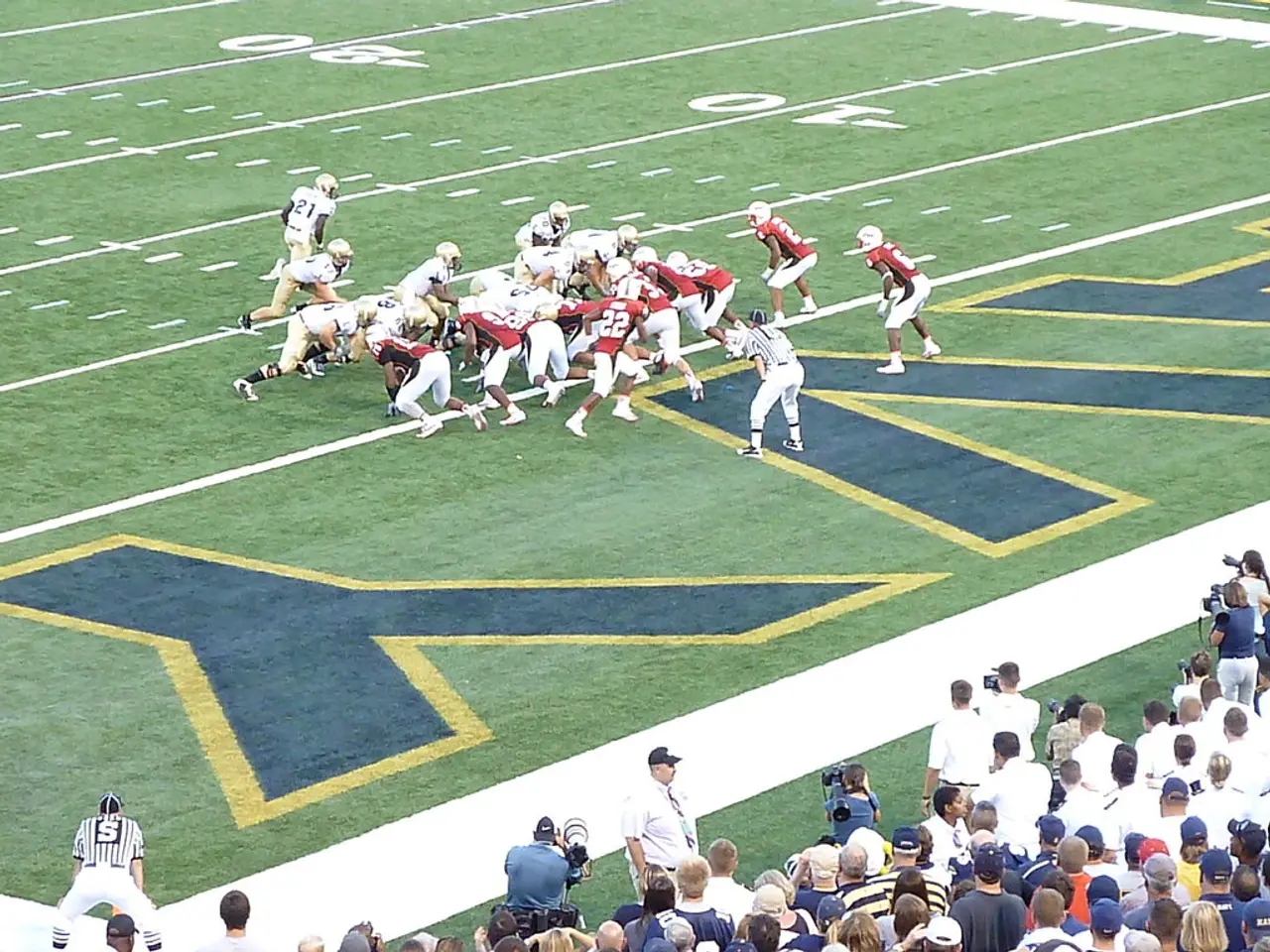US garment and jewellery orders endangered due to unexpected tariff hit in India's industries
The recent announcement of a 25% tariff on Indian apparel and jewellery exports by the U.S. government has sent shockwaves through these sectors, with India being the largest market for Indian textiles and apparel, accounting for about $5.6 billion in exports alone.
The tariff will increase export costs, making Indian goods less competitive compared to countries like Vietnam and Indonesia, which face lower tariffs. This could lead to potential order cancellations, price pressures, and a loss of market share.
In the gems and jewellery sector, which is heavily dependent on the U.S. market, the tariff announcement has resulted in significant export disruption and stock market impact. Economists estimate that if these tariffs persist, they could reduce India's GDP growth by about 0.2 percentage points, indicating broader economic fallout including job impacts beyond just the affected export sectors.
Regarding potential job losses, while exact numbers are not specified, the adverse impact on exports and company margins implies risks to employment in these labour-intensive sectors. Experts warn that rising costs and shrinking orders could trigger job cuts and business disruptions, especially given textiles and jewellery's significant employment base in India.
Several garment exporters, including Welspun Living, Gokaldas Exports, Indo Count, and Trident, make 40%-70% of their sales in the United States. Gokaldas Exports, one of the key garment exporters, has U.S. clients such as GAP, Walmart, and JCPenney. The tariff announcement has come as a shock to these exporters, who had been hoping for a bilateral trade deal and were preparing for a rise in orders from U.S. retailers.
Exporters are urging the government to find a way to restore stability before September, giving them time to ramp up seasonal production for the U.S. holiday season. Naveen Michael John, executive director at Cotton Blossom India, which supplies Walmart and Bass Pro Shops, stated that Indian factories may start poaching each other's customers if U.S. business declines.
The higher tariffs could potentially shift orders from Indian exporters to Vietnam, which currently has lower U.S. duties of 20%. Tirupur, a textile hub in southern India, is experiencing mounting concerns among exporters regarding the ongoing uncertainty.
The U.S. President, Donald Trump, has announced a 25% tariff on Indian imports, effective from Friday. The U.S. and India are still engaged in talks, aiming to reach a bilateral trade deal. India has a 5.8% share in the U.S. garment market, behind China, Vietnam, and Bangladesh.
In the jewellery sector, India's gems and jewellery sector, which relies heavily on U.S. buyers, has seen a decline in exports of cut and polished diamonds, reaching their lowest in nearly two decades in the 2024/25 fiscal year due to weak U.S. and Chinese demand. One jewellery exporter in Surat, India's diamond-polishing hub, stated that without a trade deal, exports will not recover and they will be forced to cut production and jobs.
Gautam Nair, director at Matrix Design and Industries Pvt Ltd, a subsidiary of India's largest garment exporter Gokaldas Exports, stated that the 25% duty will severely impact exports and that they had been preparing for expansion, expecting lower tariffs under the U.S. deal.
In summary, the 25% U.S. tariff on Indian apparel and jewellery exports will significantly harm these sectors due to the U.S. being the largest market for Indian textiles and apparel. The tariff will increase export costs, make Indian goods less competitive, and potentially lead to order cancellations, price pressures, and a loss of market share. The gems and jewellery sector will also face major challenges due to its high dependence on the U.S. market. The tariff announcement has put immense pressure on India's apparel sector, which already faces higher costs than leading competitors Bangladesh and Vietnam. The adverse impact on exports and company margins implies risks to employment in these labour-intensive sectors. Economists estimate that if these tariffs persist, they could reduce India's GDP growth by about 0.2 percentage points. These effects are contingent on how long the tariffs remain and whether bilateral negotiations can resolve the trade dispute.
- In the sports sector, Indian athletes might face increased competition due to decreased sales of Indian apparel and jewellery, as higher export costs make these goods less competitive and could potentially lead to a loss of market share.
- The value of jobs in the textile, garment, and jewellery sectors could be at risk, as mounting costs and order disruptions may trigger job cuts and business disruptions in these labor-intensive industries.






